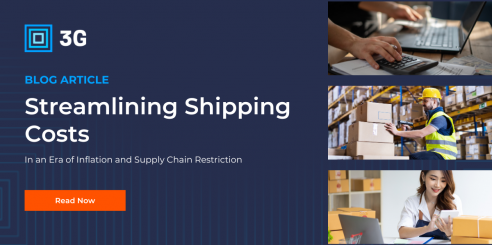Blog
Key Factors in Selecting a Cloud-Based TMS System

Which Cloud-Based Transportation Management Software (TMS) is Right for You?
What is most important to look for? Does the solution meet your unique industry needs and support your distribution strategy?
Your TMS system plays a vital role in helping you streamline the different dimensions, processes and complexities of your unique supply chain. Transportation software has revolutionized transport logistics and supply chain management while streamlining processes, reducing time and cost spent on administration. As a result, your organization is more focused on the customer and the future of your business.
Many software vendors claim to a offer fully-featured cloud-based TMS software system, but their functionality and the transportation modes they manage varies greatly. Shop around and you will find the differences to be wide-ranging and significant.
The very first decision you have to make is what kind of a cloud solution suits your requirements.
SaaS TMS vs. Hosted TMS
It’s important to recognize the difference between Software-as-a-Service (SaaS) and hosted software so that you are able to choose the option that best suits your needs. In simple terms, SaaS is a service you pay for and hosted is a product you own outright.
When using the SaaS model, all customers’ data is stored in the same database, but each client’s data is accessible only to themselves. On the other hand, hosted basically means a customer purchases and owns software; each customer is treated separately, with individual instances of software, databases and servers. This model entails installing the software via a hosting center and—though it typically costs less in the long run—it often requires a large upfront payment.
On-Premise TMS Systems
Historically, on-premise installation has been the norm for TMS software, but adoption of cloud-based systems is rapidly increasing and the number of on-premise systems is quickly falling. The benefits of the cloud are well understood, but why would you still choose an on-premise system?
Having control over a system is often seen as a benefit, but this thinking comes with too high of cost and slower innovation in response to customer demands. It requires internal IT resources to continually update the software with pertinent industry capabilities. In contrast, companies who choose a Saas-based TMS system are able to automatically accept all the latest updates and industry innovation provided by the vendor at a high frequency.
A second perceived benefit is that on-premise software is more secure. It’s extremely costly to maintain the latest and greatest proper security measures on your own. Without the latest protection, you’re at greater risk for data breaches and high security threats. Imagine a delay or shut down in operations because of a security breach? Even with data backups properly in place, you are facing the prospect of months on end to fix an issue and recuperate the losses.
Outside the hosting decisions, here is a list of tips to help you select the right TMS for your organization:
- Establish priorities & goals – clearly articulate strategic direction and business case details for TMS adoption
- Align stakeholders – ensure decision makers understand the full value proposition and deployment schedule
- Select a vendor that can grow with you – willingness to work with you and the hunger to make you successful are best predictors of successful relationship
- No single point of failure – find a TMS platform that can be easily understood and used by multiple people in the company; seek simplicity and practicality
- Understand deployment timeline – learn the details of how long the implementation will take and avoid pitfalls with a mutually agreed upon project milestones
- Check references – read reviews, speak to customers of your potential vendor, ask critical questions and gauge “partnership” potential
- Seek connectivity – make sure the potential solution can easily integrate with legacy systems, i.e.: seamless ERP integrations, and future systems
- Evaluate the strength of the carrier network – check the current carrier network and the process to update current network and onboard future carriers
3Gtms provides the most comprehensive, yet flexible TMS that optimizes transportation and execution of efficient supply chain strategies . The solution sustainably delivers successful outcomes for top performing 3PLs, Carriers, Freight Brokers, and Shippers. The core focus in planning and optimization enables tracking capability, carrier management, integration, billing, and much more. 3Gtms will grow your business! Let’s talk.


